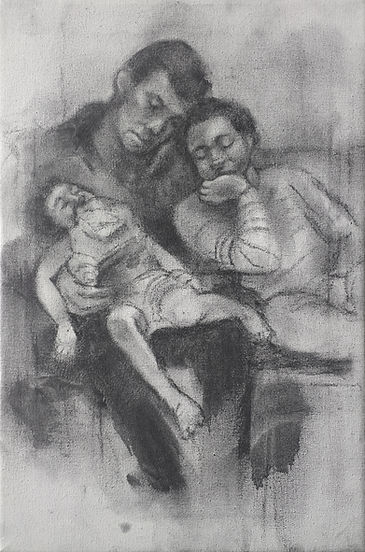
「藝術之間」藝術治療
ART IN BETWEEN - ART PSYCHOTHERAPY

CHILDREN AND YOUNG PEOPLE
‘The child must develop and become integrated by trying to make sense of the conflicts experience between inner needs, wishes, and phantasies and the outer constraints of this environment.’ (Case and Dalley, 2002)
Art psychotherapy is a form of psychotherapy that helps children and young people explore their thoughts, emotions, and behaviors through creating art. Through this process, they can gain insight into their inner world and be guided by an art therapist to better understand themselves and find solutions to their challenges.
Using art to express emotions can feel less intimidating than traditional talking therapies for some children and young people, particularly when words may be hard to find. Additionally, the art pieces they create can serve as a visual representation of their progress and growth throughout the therapeutic process.
Art therapists are trained to help children visually express and record their experiences, thoughts, emotions, and imaginations using various art media and approaches. Here's an overview of why and how art therapy works:
Non-Verbal Communication: Art expression is a form of non-verbal communication, making it an effective tool for children who have difficulty expressing themselves with words. This is especially true for those who have experienced abuse and trauma and may be unable or afraid to speak about their experiences.
Growth and Development: Art expressions, especially drawings, can provide valuable information about a child's development, emotions, cognition, and sensory integration, especially for children under 10 years old.
Self-Regulation: Certain sensory characteristics of art-making have been shown to improve mood, sensory integration, and help calm the body and mind, making it a useful tool for children who have experienced trauma.
Meaning-Making: Art psychotherapy provides an opportunity for children to express themselves through metaphor and enhance storytelling and narratives. These narratives can serve as a way for children to safely release disturbing or traumatic experiences with the guidance and support of their therapist.

FOR PARENTS AND CARERS
To commit to support the young person through the journey of art therapy, this often means allowing them space to process the sessions without lots of questions afterwards. Doing this gives the young person time to think and to share with you at home later on or at review points. Parents have a right to see confidential files kept for their child, but in art therapy I would ask that this right is not taken up. This is to protect the building of trust in the art therapy relationship. Review points depend on individuals, it takes the form of looking at the art works made and reflecting on where we are now. For children and young people this might include parents or carers to offer some feedback about the work and to discuss how things are going for the young person in other aspects of life.